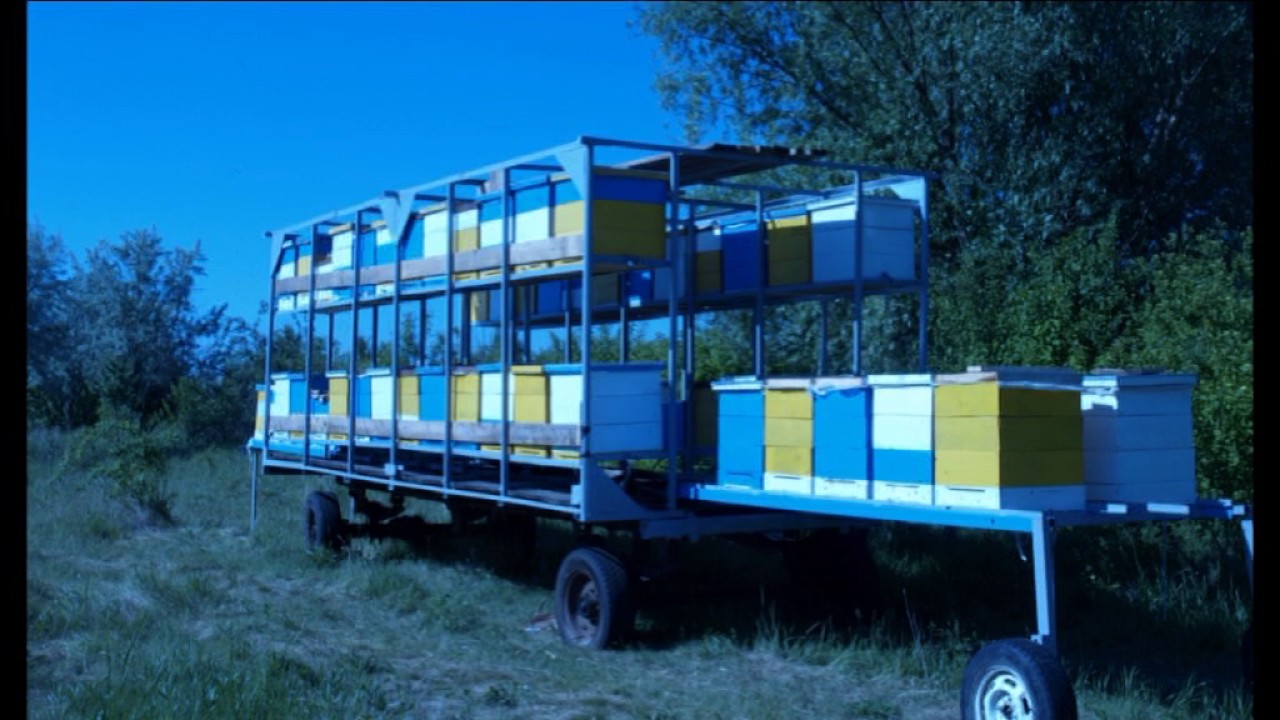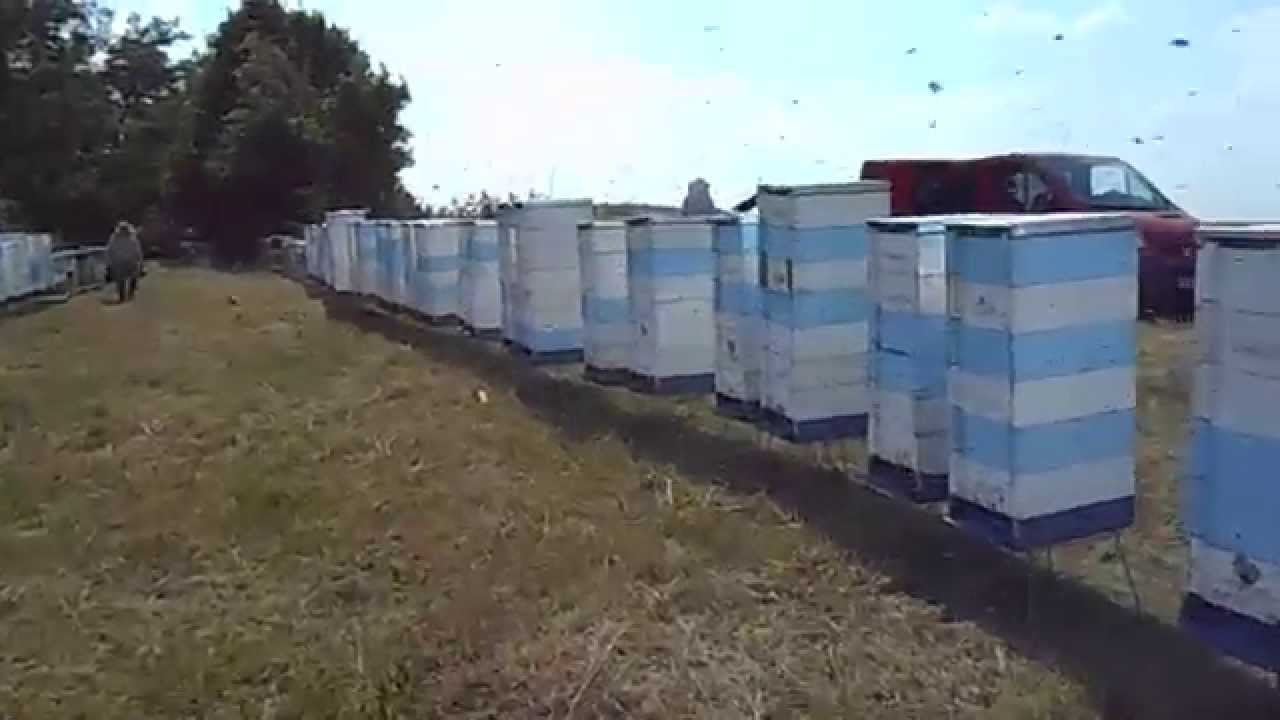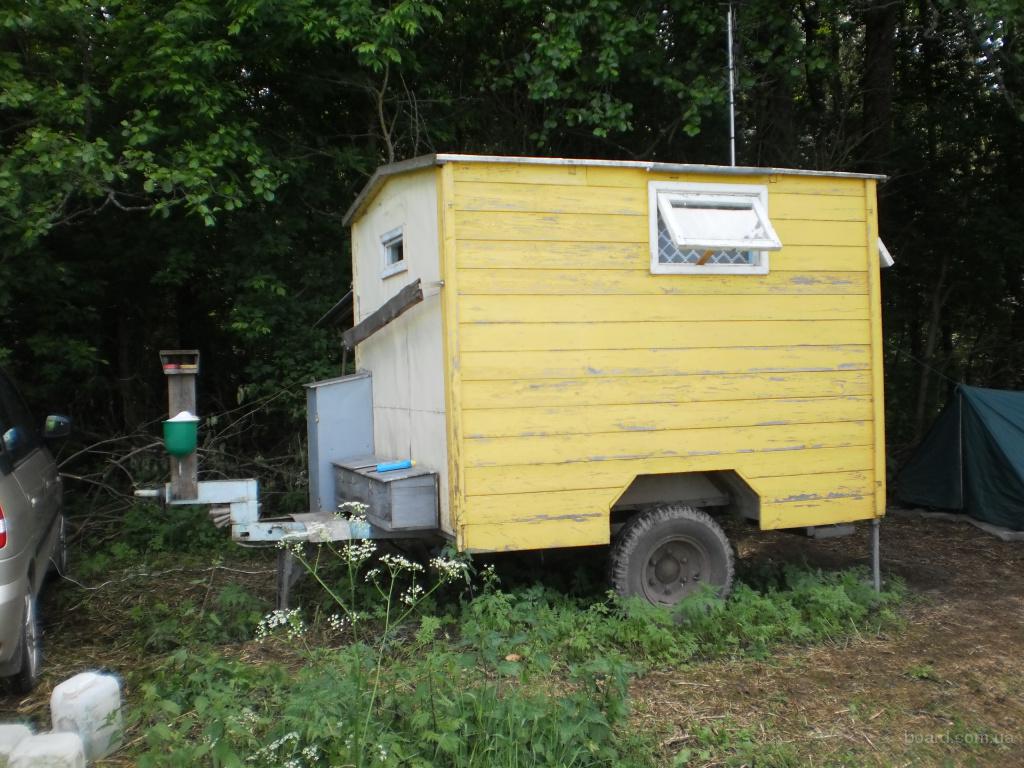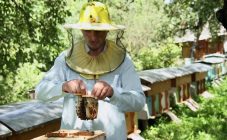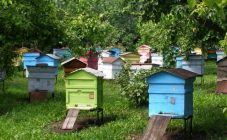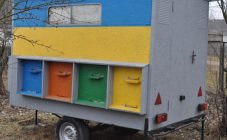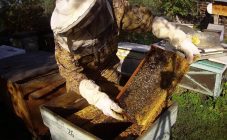Content:
To increase the productivity of bees, the apiary should be close to the flower stalks. But what if the peduncles are at a decent distance from insects? The optimal solution to this problem is a nomadic apiary. Nomadic beekeeping is very popular these days.
What is a nomadic apiary
What is a nomadic apiary? This is a bee house on wheels, which is easily transported to areas of abundant flowering of fields, meadows, trees, etc. The purpose of such migrations can be not only to increase the amount of collected honey. It can be pollination of areas planted with agricultural crops, reuse of flowering plants growing in specific areas, replenishment of honey collections in the absence of the main one, etc.
The operation of a nomadic apiary on wheels will significantly increase the amount of honey produced. Its creation implies financial costs, their number depends on a particular case, but it pays for itself very quickly, if used correctly. The payback depends on the number of trips, the readiness of the hives, bees, equipment, the experience of the beekeeper.
Nomadic pavilions differ from each other by such a factor as intensity. How is it shown? In most cases, in the amount of basic honey collection. If it exceeds 4 times, the mobile apiary is intensive. Due to the intensity, the amount of honey produced increases, sometimes as much as 3 times.
An apiary on wheels will not make any sense if several fields with agricultural crops are planted next to insects, with alternate flowering. In this case, insects do not require transportation, therefore, the bee house does not need additional financial costs for re-equipment for nomadism.
Features of the apiary on wheels
When organizing an apiary on wheels, one should take into account the fact that it is advisable to create it when producing 5 kg of honey by one bee family. In this case, it will pay for itself in a season. Some time ago, many beekeepers argued that bees have a tendency to return to the previous collection site if it is less than 5 km from the current one. But this opinion is wrong. Even if the bee pavilion is transported over a distance of 2 km, insects will collect nectar in the surrounding areas.
A feature of the nomadic pavilion is that the entrances should be tightly closed with a net when transporting bees to a new place. When creating an apiary on wheels, you should calculate the distance it will move. The amount of money spent on it depends on this. Wandering implies the presence of high-quality equipment, which you cannot do without: a lantern, mounts, spare hives, chisels, etc.
Nuances of nomadic beekeeping
Without fail, when organizing a nomadic apiary, a beekeeper's resting place should be thought out. This can be a van, a collapsible shed, or a tent. This place should be as comfortable as possible for the beekeeper. In most cases, car trailers are used for the nomadic bee pavilion.It is trailers, because if the bee housing is located directly in the car, this creates certain difficulties in case of engine breakdown.
For a bee pavilion, it is convenient to use beehives of the same size, located in several tiers, on both sides of the trailer. One trailer can accommodate up to 80 families. When creating a project for a bee house, special attention should be paid to the lighting of the apiary. Most often these are windows that are located on the roof of the pavilion. The roof must be made of durable waterproof material.
If standard hives are used in a mobile bee pavilion, then the care of bees is not very different from the care in a stationary bee pavilion.
One of the main factors of a nomadic apiary is the safety of transporting bees. For this:
- it is necessary to check the serviceability of the car;
- the dimensions of the pavilion should not exceed the norms established by law;
- additional warning lights are installed on the apiary;
- the pavilion must have reflective stripes, etc.
Beekeeper mobile home
For a beekeeper, a nomadic apiary is an additional supply of honey, therefore, a financial benefit. Many beekeepers sacrifice the comfort of living in order to increase the amount of honey produced several times. When creating a nomadic pavilion, you can immediately think about the availability of a place for rest and accommodation for the beekeeper. It should be equipped with the most basic necessities. Before leaving the apiary to a new place, the beekeeper is obliged to examine it in detail for the presence of settlements of ants, water, shade, sunlight and other things. In advance, you need to think over the inventory, dishes, first aid kit, mobile communication devices and other things that may be needed in field living conditions.
Particular attention should be paid to the health and strength of bee colonies, since, in addition to all the advantages of insect migrations, there are also disadvantages in the form of increased risks of bee diseases.
Wandering with bees
A few days before the intended transportation of the bee pavilion, the beekeeper must prepare the insects. For this, bee hives and families are examined for all sanitary and hygienic standards. After that, the car, which will be involved in the transportation of the pavilion, is inspected for technical faults.
On the last evening before moving, after the arrival of insects, the hives are tightly closed and installed on a car trailer. There they must be carefully secured.
The success of the migration with bees largely depends on the level of professionalism of the beekeeper himself. With the right organization, there shouldn't be any additional complications. It is recommended for beginners to wander with experienced beekeepers for the first time in order to avoid unforeseen force majeure circumstances.
